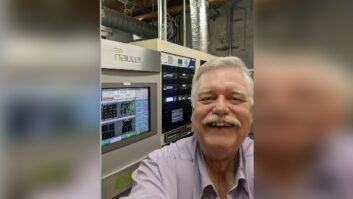In theory, multicast channels now really can become like the Wild, Wild West, something long ago predicted by IBOC proponents. The HD Digital Radio Alliance says that after three years, it’s time to lift the restrictions on multicast ads and programming.
Alliance President/CEO Peter Ferrara announced the change to reporters yesterday. Initially, alliance members had no ads on HD2 channels and a formula only known to them for selecting multicast formats, trying to fill format gaps in a market and to complement existing programming.
In January, the alliance relaxed the ad restrictions on HD2 channels, but still limited them to no more than four 10-second, noncom-sounding mentions an hour. Channels could also be named after a sponsor — the Starbucks Channel, for example.
The HD Radio Alliance comprises Clear Channel Radio, Beasley Broadcast, Citadel Broadcasting, Greater Media, Entercom, Bonneville International, CBS Radio, Emmis Communications and Cumulus.
Ferrara told Radio World this summer that CBS, Clear Channel and Emmis have engaged in some form of underwriting-like mentions and accepted advertising dollars on their multicast channels. Yet, anecdotally, I heard that not too many stations were able to sell ads on those channels under the restrictions, so the alliance decided after three years, it was time for the local stations to “take full ownership of HD Radio,” as Peter put it.
“We broke the egg. Now it’s time to make some omelets,” he said.
Though the alliance member stations have agreed on so-called “voluntary guidelines to preserve the diversity and clutter-free programming” of the multicast channels, really, “They’re free to do whatever they want,” he said, saying if an alliance station plans to change multicast formats, for example, they’d do it in a “consumer-friendly” way.
One thing I notice is the timing coincides with Arbitron figuring out how it wants to handle mentions of the HD2 channels for measurement purposes. Although since July, the first month that was possible, no station had enough digital listeners to get a mention.
The alliance hopes to see HD2 included in both local and national ad buys such as national sponsorships for networks of multicast stations or large national radio buys. Or, they suggested, integrated sponsor packages could include main channel ads, Internet ads, viral marketing and HD2 sponsorships.
While everyone wants to begin to monetize their HD2 channels, they don’t want those signals to end up being “a dumping ground,” said Peter, using the early days of Web radio as an analogy. When stations began streaming their signals on the Internet, he said, they came close to giving away ads.
Having partially lifting the HD2 ad restrictions “gave us a chance to dip our toe in the water, but limited what sales [departments] could do to monetize HD channels.”
(See what industry leaders have been saying about HD2 advertisings to date in our Aug. 13 article on this topic.)
Getting stations to pay attention to their multicast channels by placing unique programming on them and making sure the signal is reliable has, understandably, been a struggle. No one wants to take their focus off the main channel, which, so far, has been the one bringing in revenue.
Some observers believe using the HD2 channels to deliver data-based services (like real-time traffic), which is possible with IBOC, is the real way to make money on the multicast channels. It will be interesting to see what happens now that the self-imposed restrictions are off.
Comment to me on this or any story in The Leslie Report. E-mail [email protected].











